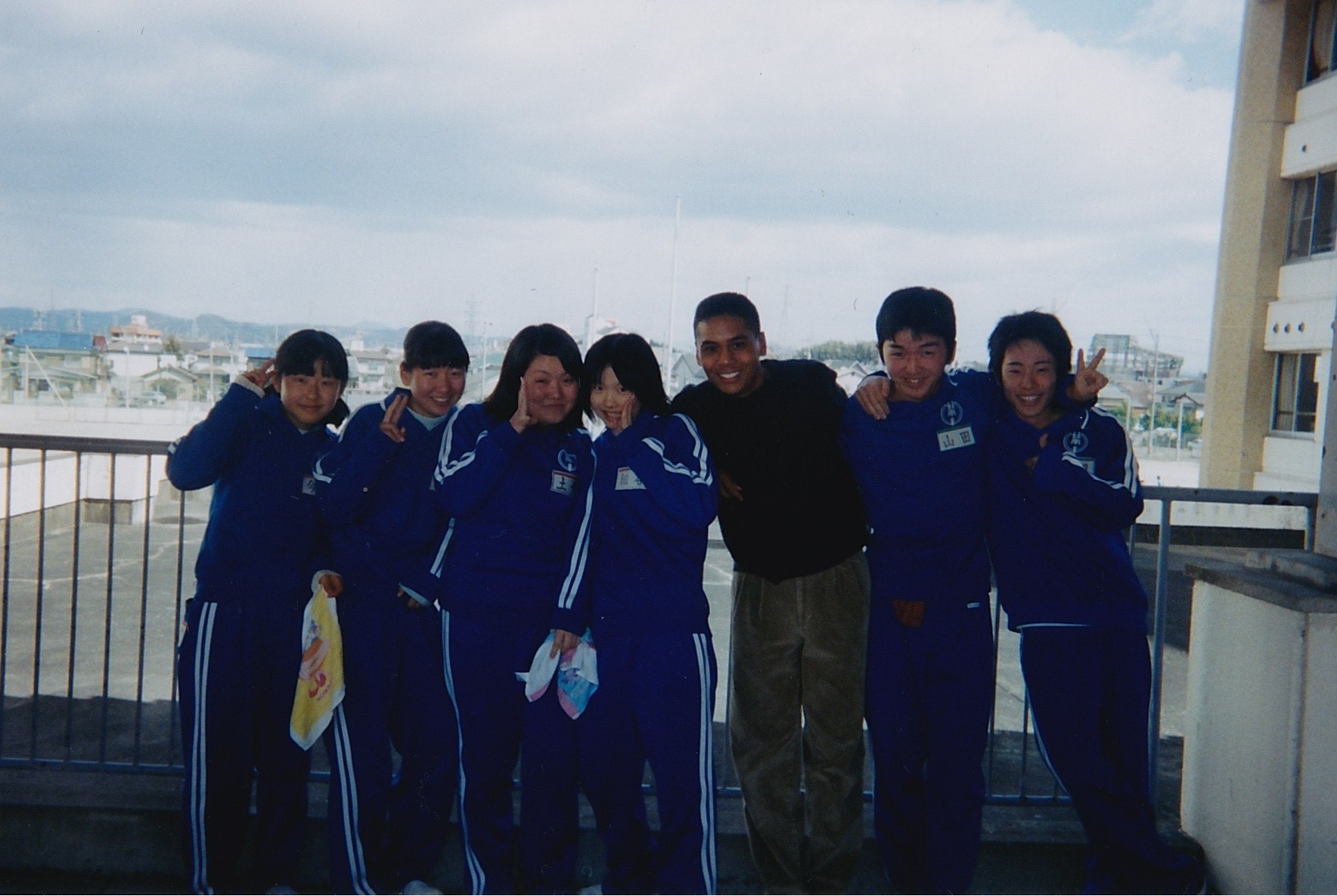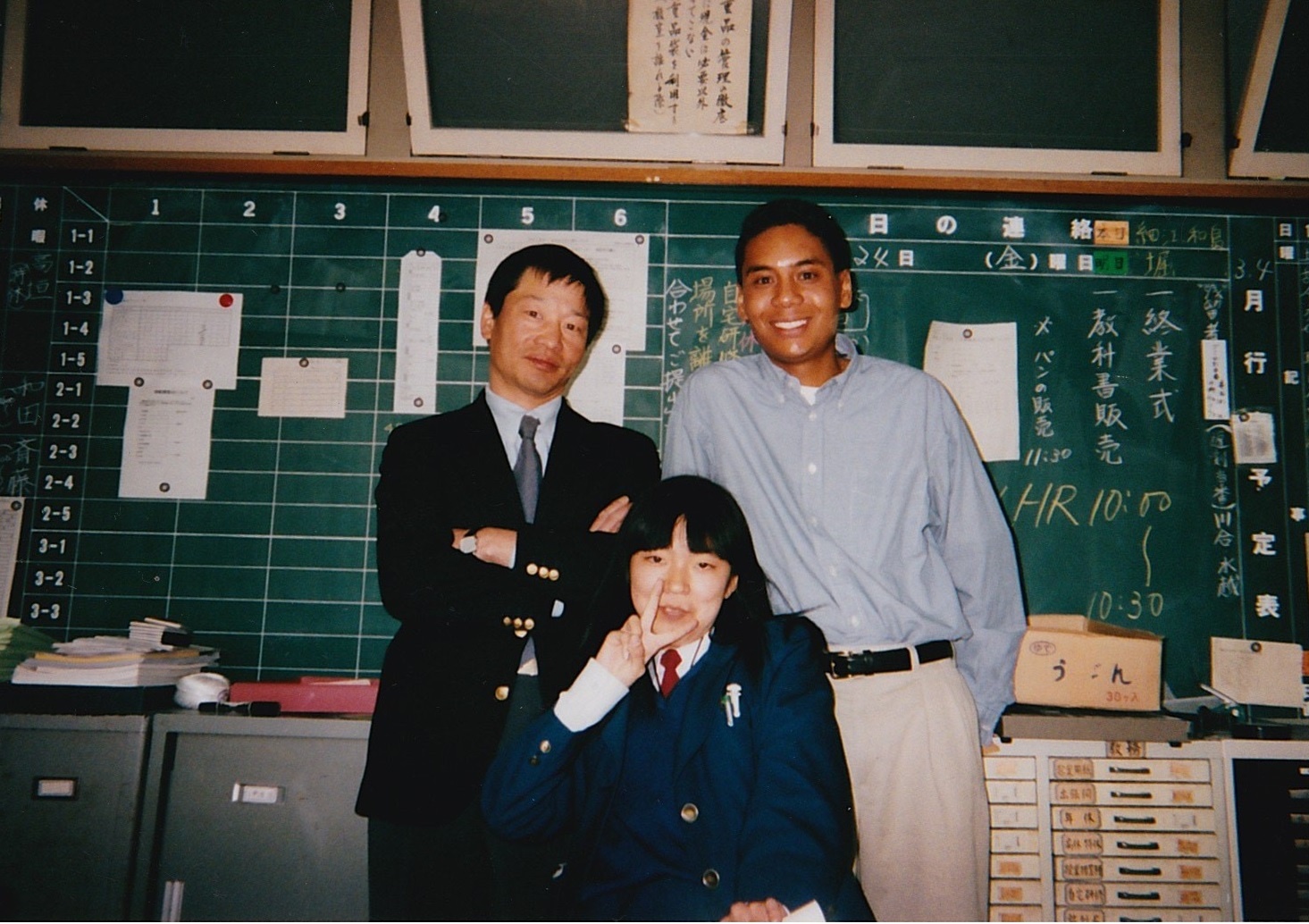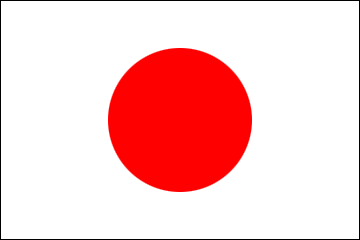Interview with Mr. Chris Vaughan
2016/10/12


Chris Vaughan with students at Sonan Junior High School in Kani-shi, Gifu prefecture Chris Vaughan with supervisor Mr. Sakurai and a student at Yaotsu High School in the Gifu prefecture
Chris Vaughan grew up in Fairbanks and graduated with a BA in Journalism and a minor in Education from the University of Alaska Fairbanks. Mr. Vaughan taught in Japan for three years as an Assistant Language Teacher (ALT) in the Japan Exchange and Teaching (JET) program. Mr. Vaughan completed graduate school with a MA in International Relations at the University of New South Wales in Sydney, Australia. After graduating, Mr. Vaughan returned to Japan, where he spent two years as an English teacher nearby Nagoya-shi in Togo-cho, Aichi-ken.
Chris Vaughan later returned to Alaska and entered the commercial banking industry. He is currently a commercial loan officer/relationship manager for Wells Fargo, and belongs to the group that primarily works with large corporate clients. Mr. Vaughan maintains his Japan-related interests and serves as the President for the JETAA Alaska chapter. He is also the treasurer and a board member for the Japanese Society of Alaska.
How did you learn about the JET program? What made you want to apply?
I first learned about the JET Program during the fall semester of my final year at the University of Alaska Fairbanks. There was a flyer on the bulletin board in the Gruening Building advertising an information session for JET. I had a classmate that had served in the military and traveled around the world. He told me about meeting English teachers in various countries and it piqued my interest. I had always been interested in traveling and learning about new cultures, and found myself wanting to find an opportunity to live and work abroad after graduating from university.
Where were you placed in Japan? Had you visited Japan before JET? How did your expectations of Japan compare to reality?
I was placed in a high school in Yaotsu-Cho, Gifu-Ken. Yaotsu is a small town with a population of only around 12,000 people. It is very scenic though, and the school sits on top of a hill overlooking the Kiso River. I actually lived in Minokamo-shi, which is larger with around 55,000 people. Minokamo is around nine or 10-miles away, and I commuted to the high school each day.
I had never visited Japan before JET. In fact, I remember studying basic words and phrases from a text book the JET Program sent me before departing Alaska. I was not familiar with the food either, and I was literally practicing how to use chop sticks on the bullet train from Tokyo. I was certainly what you could call a "green" candidate having had no experience in Japan.
My predecessor had provided me a lot of information in advance, but nothing can quite prepare you for living in a foreign country for the first time. It is safe to say that my expectations and reality really met head on the moment I arrived to my apartment in the middle of the summer. After being shown some basic things in my apartment, it soon dawned on me that I could not read anything or really communicate much in Japanese. My learning curve was steep but it was also a lot of fun. I enjoyed the challenge and found myself being more curious about the culture, people, and the environment with each day.
What was a typical day like as a JET?
Each day would typically be spent team-teaching with a group of three or four English teachers. I would spend other time preparing lesson plans and trying to come up with new ways to teach English to the students. My situation was unique in that I also spent around one or two-weeks a month teaching at three different junior high schools in nearby Kani-shi. Those junior high schools did not have an ALT, therefore they arranged to have me visit on a rotating basis to assist the students there. Basketball is my favorite sport and I used to play with the students outside during breaks.
What was it like to return to Alaska? How do you maintain connections with Japan today?
I remember initially feeling somewhat out of place back in Alaska after living in Japan as part of JET for three years. I had not visited the U.S. much during my time away in Japan, and had become very accustomed to life there. I felt I had changed in many ways, but life and things in Alaska had not. Of course, it was great to be with family again and meet good friends from home again.
I am still in contact with friends and co-workers from Japan today. Social media has made things easier, but I also still exchange letters and postcards from time to time, especially during the holidays. I visit Japan periodically with my wife, Mitsuko, and always make it a point to meet with friends whenever I can.
What was the most valuable part of your JET experience?
All the wonderful friendships I made while on JET. This includes my co-workers, other Japanese friends in the community, and fellow ALTs and CIRs from all over the world. I certainly enjoyed teaching the students, but little did I realize that my life outside of school would be just as fulfilling. My Japanese co-workers and friends took me sightseeing and invited me to their homes. I was fortunate to travel to many places in Japan and other parts of Asia with friends as well.
What advice would you give to aspiring JETs?
Be open minded and do not be afraid to try new things. The students and teachers really look forward to having you come to their school, and the JET Program provides a fantastic opportunity to share your cultures with one another. Realize the opportunity you have been provided being part of JET, and make the most of your time in Japan. Not only will it provide many memories and friendships, but the skills you develop on JET can be transferred to other careers outside of teaching if you desire.
